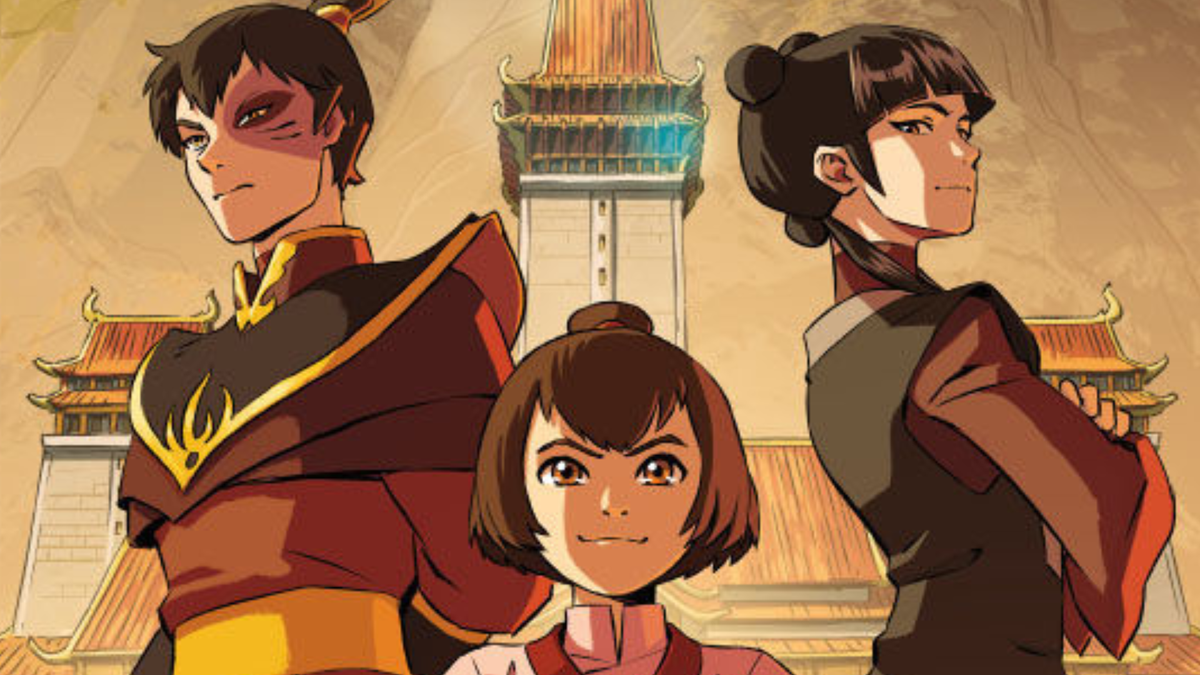
Water. Earth. Fire. Air. Long ago, a cartoon series about a young bald boy with a blue arrow tattooed on his head premiered on Nickelodeon, completely unaware of the lasting cultural impact it would still be having 20 years later. We followed this boy, Aang, and his friends as they traveled the world, desperately trying to help him learn to Bend all four elements and save the world from the Fire Nation’s empirical conquest before it’s too late.
Now, in a new story by Faith Erin Hicks, we get to see the continued efforts to heal the damage done by the Hundred Year War, this time in the next generation of the Fire Nation.
*Mild spoilers ahead*
Set after the end of the Hundred Year War, Ashes of the Academy continues off of a previous comic, The Search, which (some mild spoilers ahead if you haven’t yet read it) followed the newly appointed Fire Lord Zuko’s efforts to find out what happened to his long lost mother, Ursa. Not only does he manage to find his mother, but he also discovers he has a half-sister, Kiyi. Which brings us to the story of Ashes of the Academy.
Now in the Fire Nation capital with her mother and half-brother, Kiyi is starting school at the Royal Fire Academy, which Zuko has changed to allow all young Fire Nation girls to attend, not just those from upper class families. This is one of many changes he has made under his rule, along with now having the children be taught the truth about the Fire Nation’s role in the Hundred Year War rather than the highly-edited propaganda that has been taught for the last century.
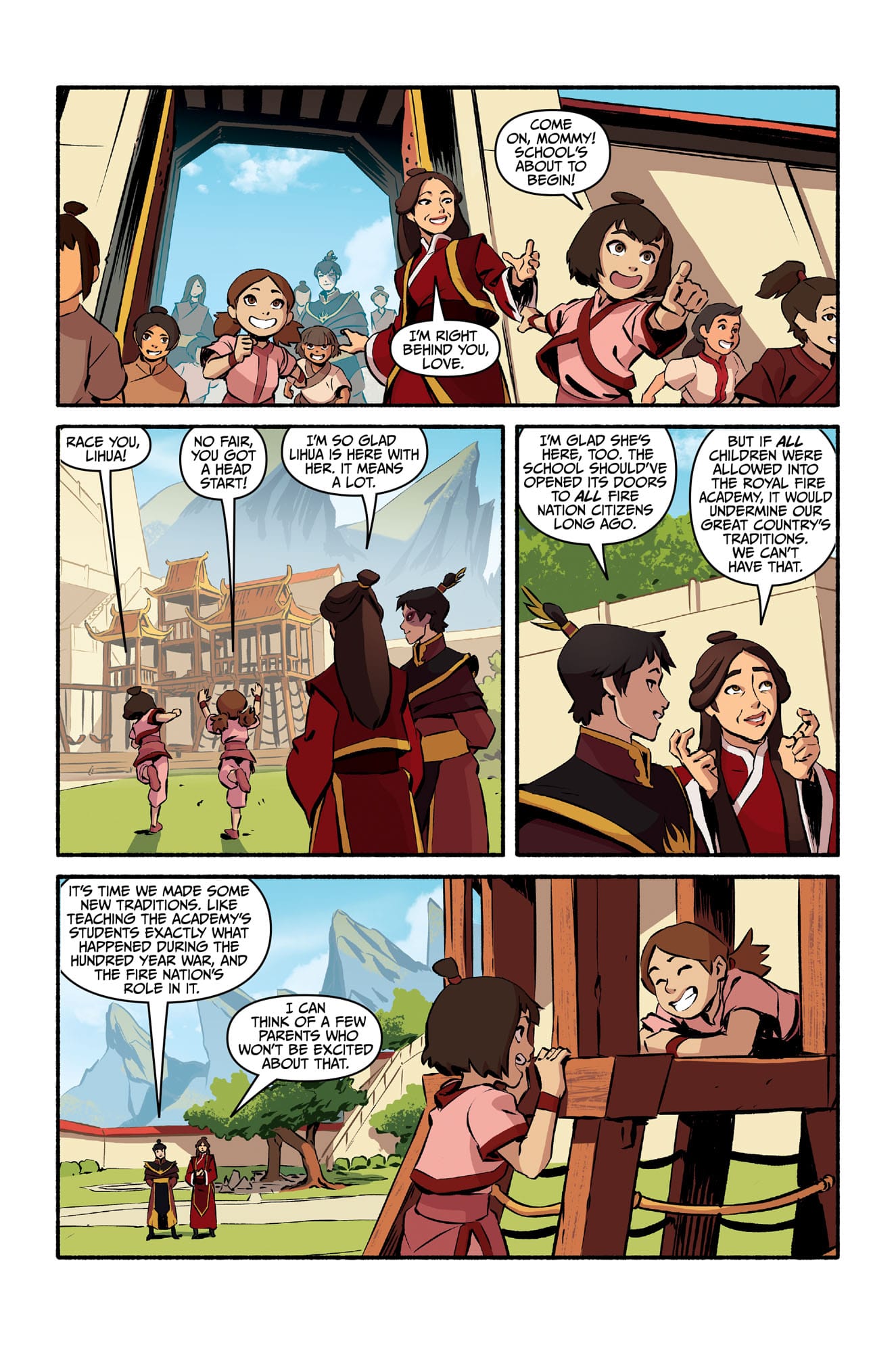
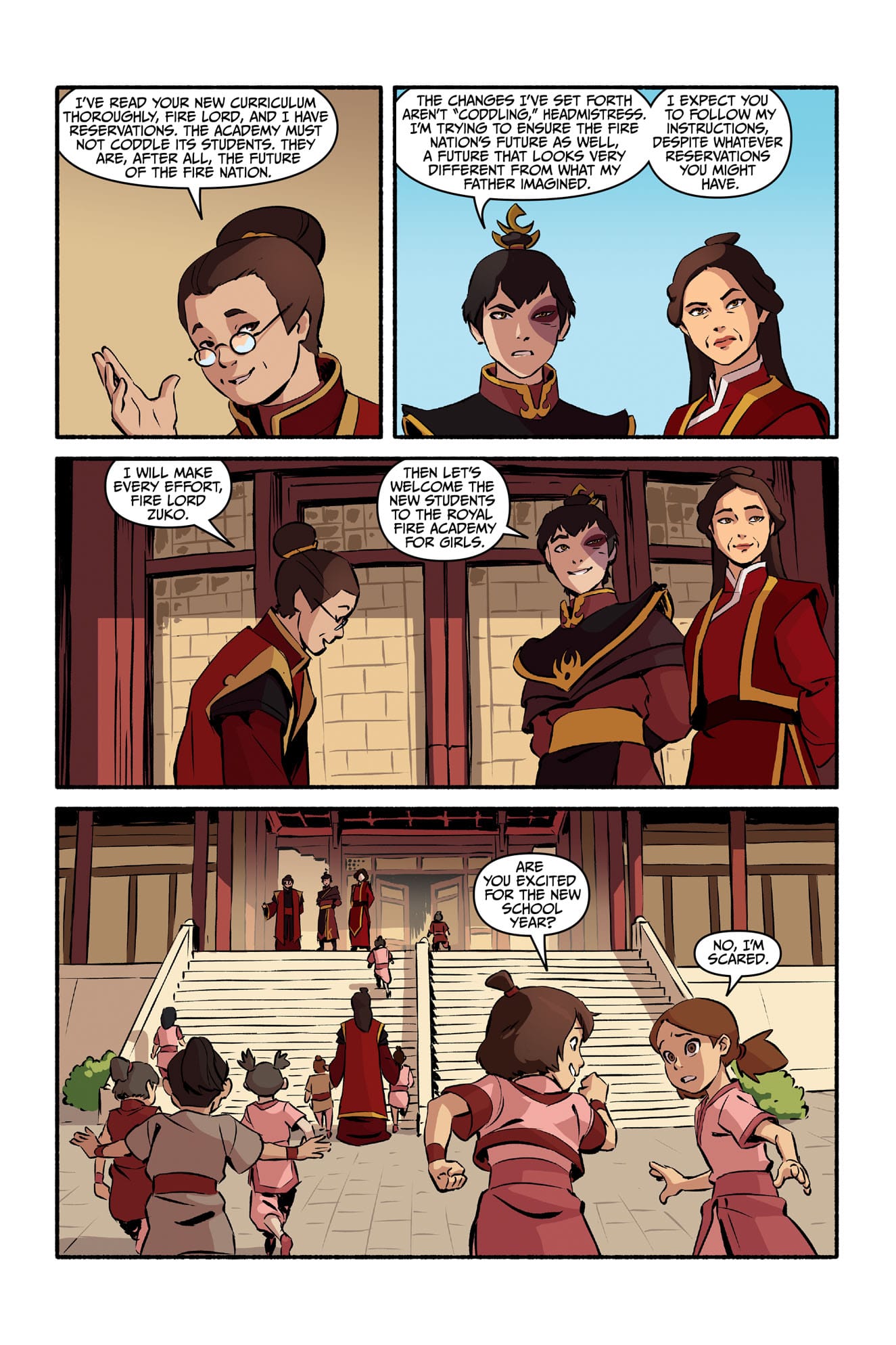
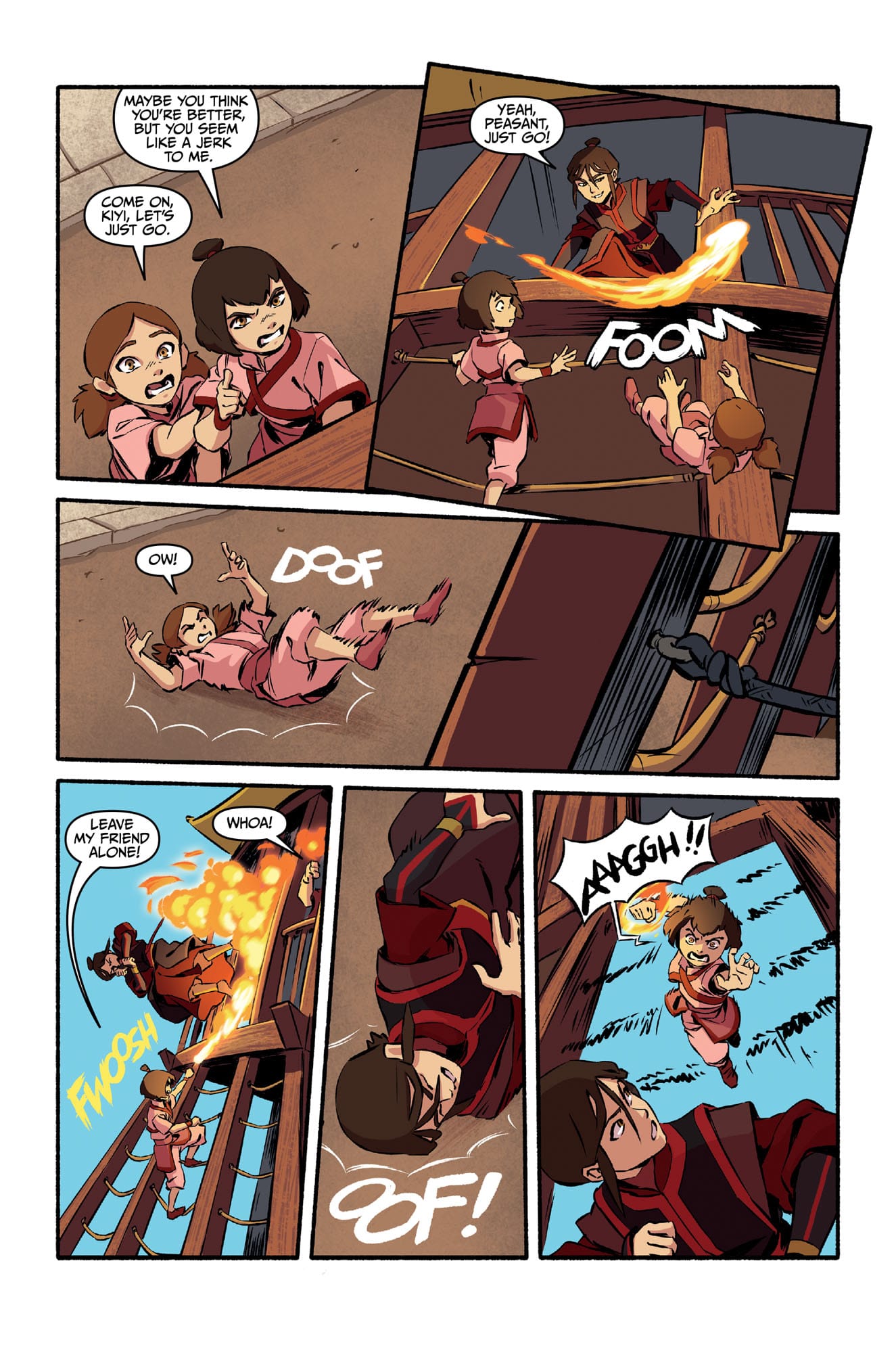
As one might expect, however, not everyone is particularly thrilled about these changes, particularly when they clash with the strictly upheld traditions of the Fire Nation. And herein lies the catalyst for the story’s conflict and deeper message.
Avatar: The Last Airbender was never a show that shied away from deeper messages. On the surface, it’s an entertaining, heartwarming cartoon about a young boy trying to save the world from an evil villain. But beneath that fun exterior were messages about the evils of imperialism, the harsh realities of war, and how trauma can shape us in ways that we could never expect.
In Ashes of the Academy, Faith Erin Hicks continues this trend of wrapping deeper messages in a fun, colorful wrapper about people that can shoot fire from their fists or move rocks with their minds. This time, the message is one about whether we allow tradition to hold us back from growing as a society by not only keeping us stagnant, but also by using it as justification for harmful ideas and actions. It’s powerful, thought-provoking stuff, told in an easy-to-digest manner. I won’t go into it too much here to avoid spoilers, as I think it’s better to read the story yourself and form your own conclusions from the ideas presented.
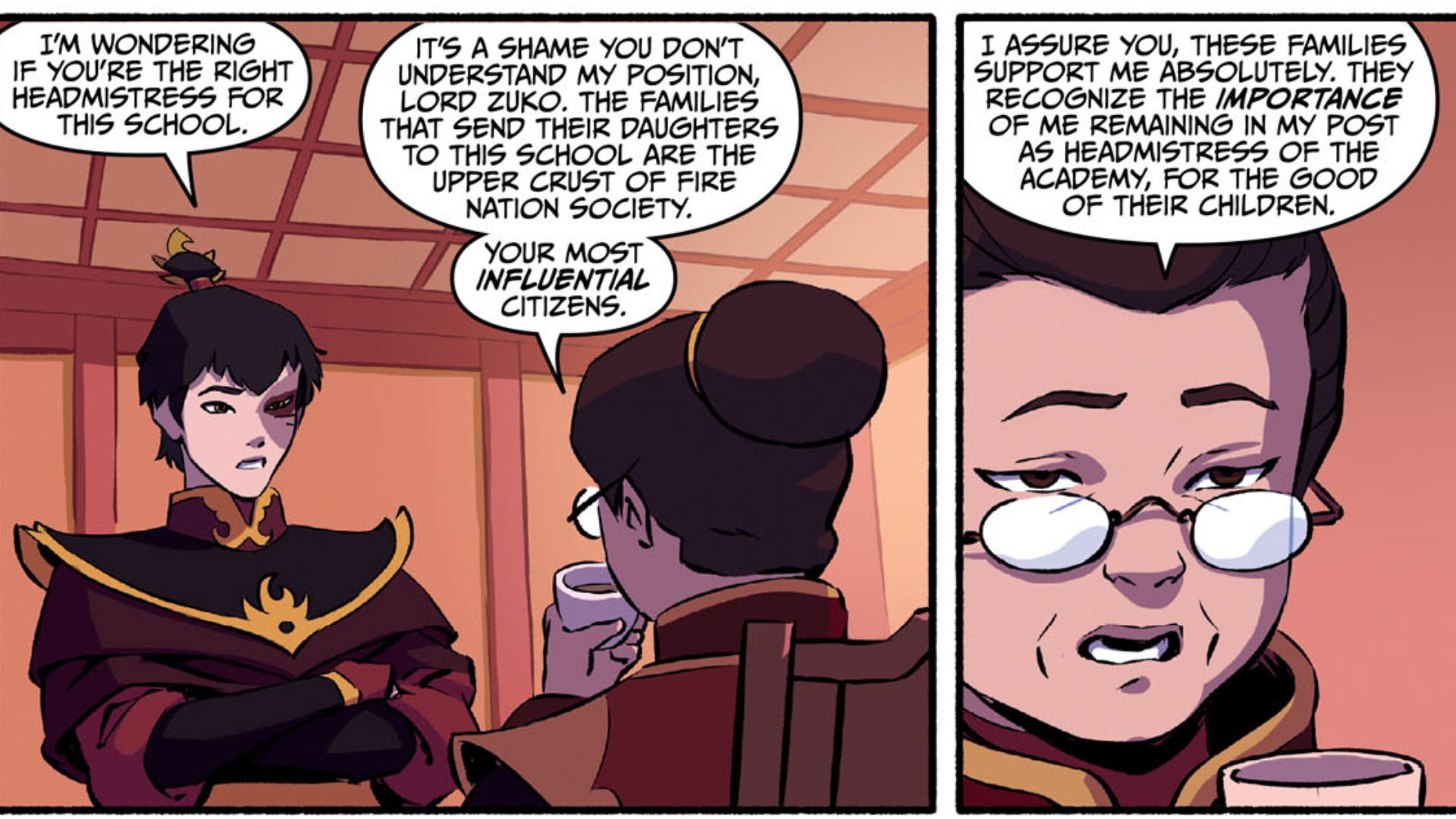
Focusing back on the story itself, it’s an excellent addition to the growing Avatar canon. It has the balanced blend of action, humor, and depth that the original cartoon perfected, without being afraid to be its own thing. Rather than revolve around the cast of the show, Ashes of the Academy focuses on a smaller cast of characters, allowing a new story to be told while still connecting to the larger canon in meaningful ways. It’s a choice that not everyone might enjoy, especially if you’re just looking for more stories about Aang or the rest of Team Avatar following the Hundred Year War. As someone that has always loved large fictional worlds that expand their lore beyond just the core cast of characters, however, I personally found this choice to be an enjoyable one. Not only does it allow characters that may not have received as much attention in the original show to shine, but utilizing new characters also allows for new perspectives on the changes happening to the world following the War rather than just reusing the same perspectives we spent three seasons following. This helps to drive home the deeper themes of the story in ways that may not have been as powerful had Faith Erin Hicks chosen to just use Aang again. While one of the main characters from the show does appear (you can probably guess who based on the subject matter, if not the cover art by Peter Wartman), I personally didn’t feel like their presence was overpowering. Instead, they were used largely as a secondary character just to move the main characters into place.
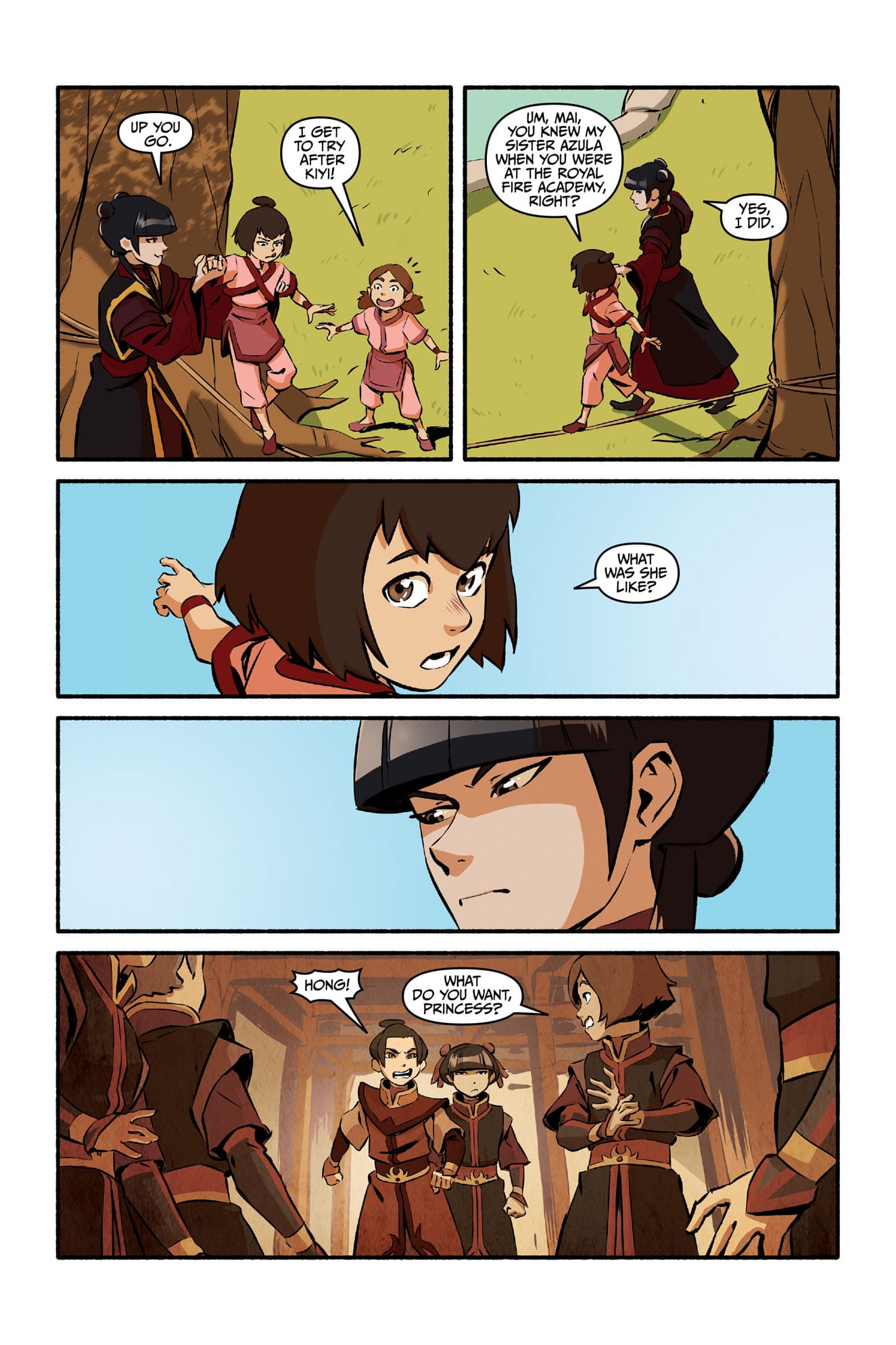
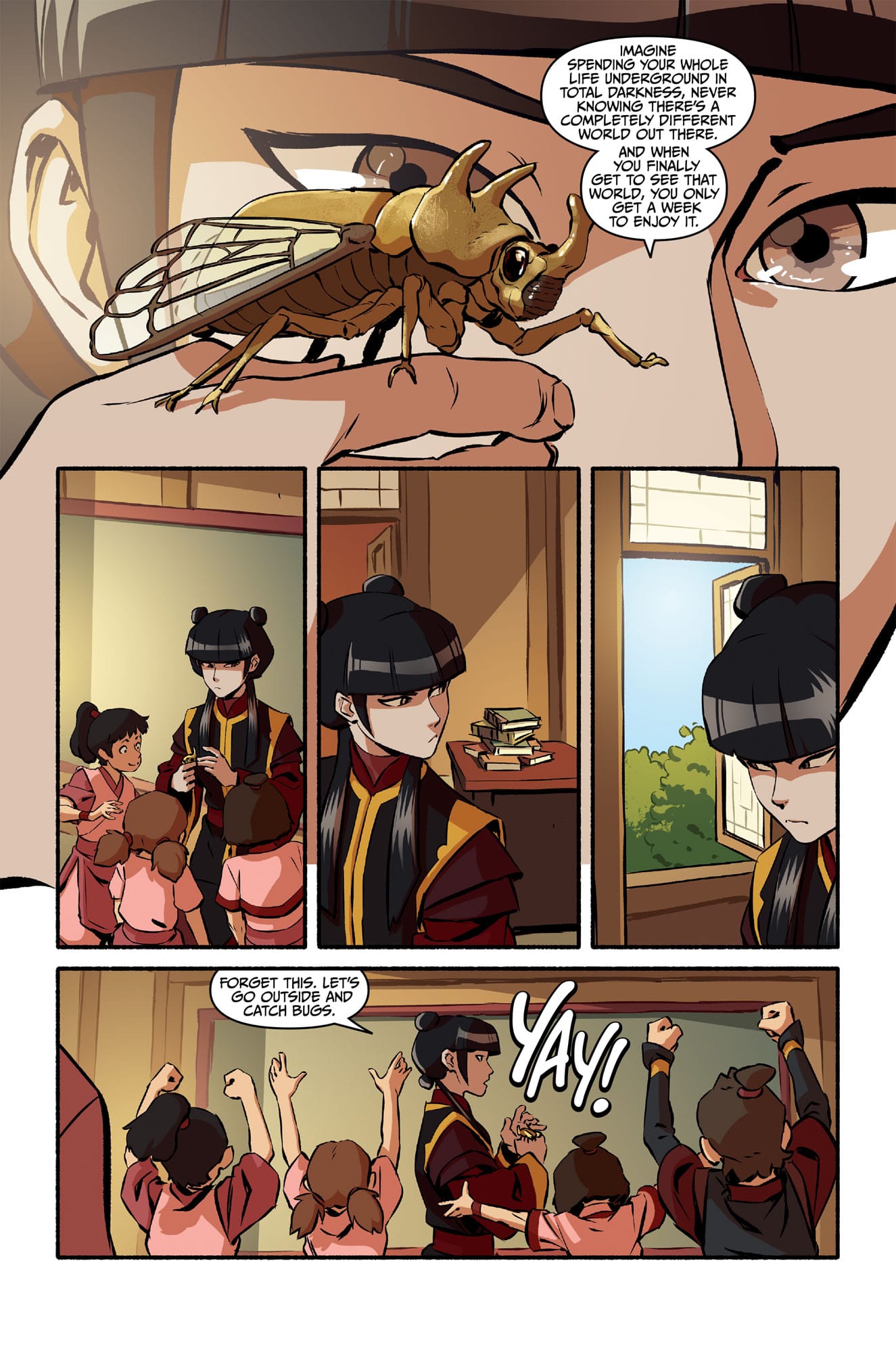

The story itself is charming and fun, following not a desperate race to save the world, but rather a much smaller-scale, grounded story about a Fire Nation school as it—like the rest of the Fire Nation—tries to adjust to the new direction Zuko is trying to steer the nation in. We don’t see massive airship battles or large-scale conflicts. Instead we see battles that perhaps more of us can relate to from our everyday lives: school bullies, class inequality and prejudice, frustrations with colleagues, and disagreements about how things “should be.” While perhaps not as exciting as watching Aang fight Fire Lord Ozai in the Avatar State or the battle of the Northern Water Tribe, it also doesn’t need to be. It’s a completely different type of story, one that focuses on the human elements of the Avatar universe rather than just the four bendable elements. And as a result, when the action does begin, it feels earned rather than shoe-horned in just to add excitement.
My only real criticism is that the ending felt a tad rushed. That’s not to say it was lazy by any means, because I still found it to be a largely satisfying conclusion, but it could have benefited from a few more pages to better close out the storyline in my opinion.
All in all, Ashes of the Academy is a fantastic addition to the expanding lore of Avatar: The Last Airbender. It’s fun, it’s thoughtful, and frankly, more Avatar stories are always welcome, so long as M. Night Shyamalan doesn’t direct them.
Avatar: The Last Airbender—Ashes of the Academy is available now from Dark Horse Comics.
Avatar: The Last Airbender—Ashes of the Academy
Great
Avatar: The Last Airbender—Ashes of the Academy is an excellent semi-standalone story within the ATLA mythos. While some might lament the lack of the core cast of protagonists from the show, others will find immense enjoyment in following the exploits of comic-exclusive characters and returning side characters that receive more time in the spotlight. Whether you’ve read the Avatar comics leading up to this story or are just diving in now, this is an excellent new addition to any Avatar: The Last Airbender fan’s collection.
Pros
- Fun story featuring a more grounded story
- Strong portrayal of deeper themes
- Fantastic balance of characters
Cons
- Ending felt a bit rushed
- Might need to read previous titles to understand everything that’s going on
This review is based on a retail copy provided by the publisher.
